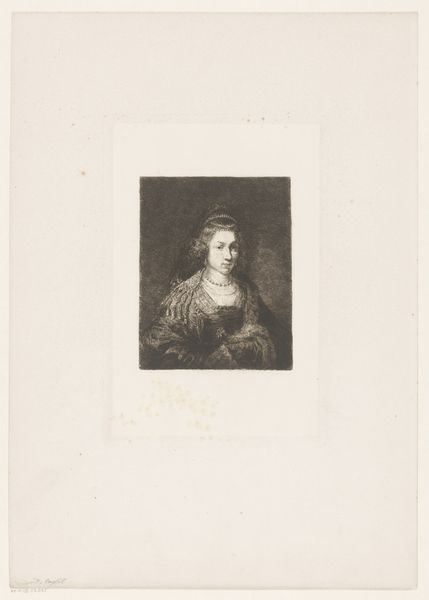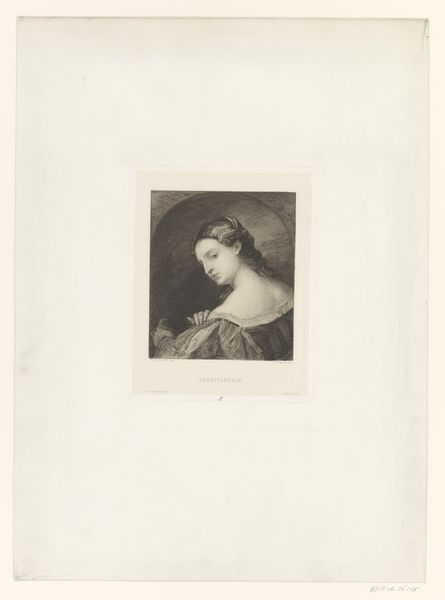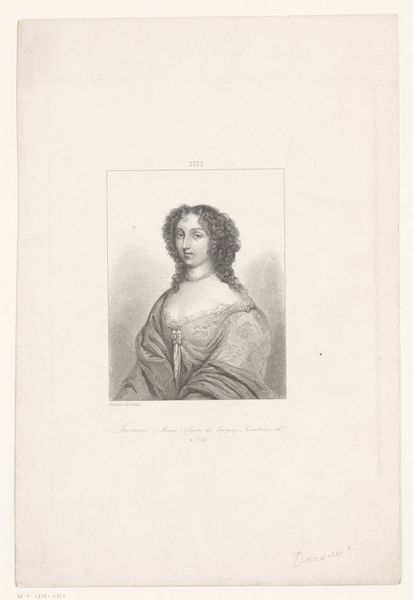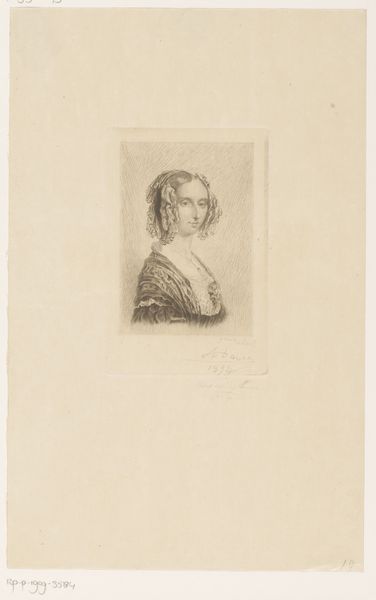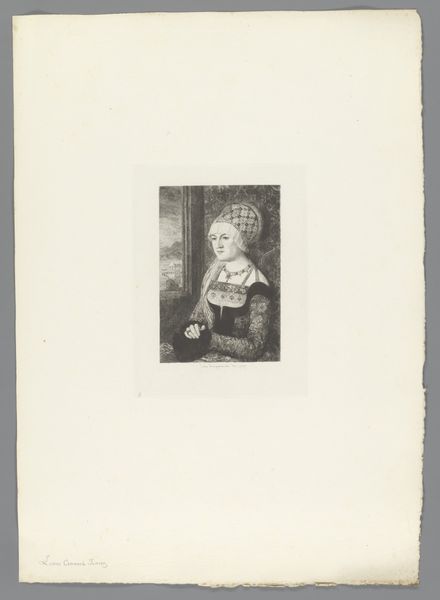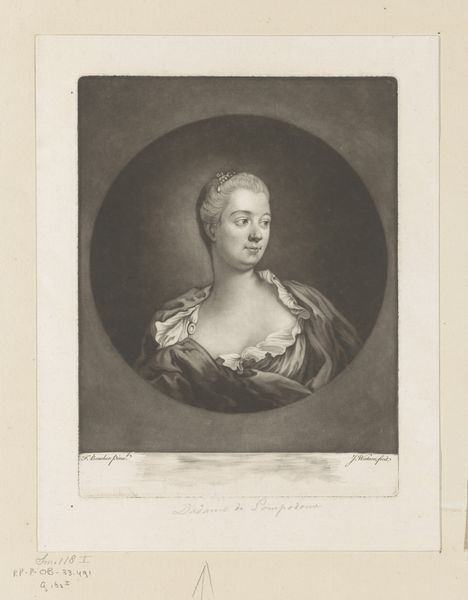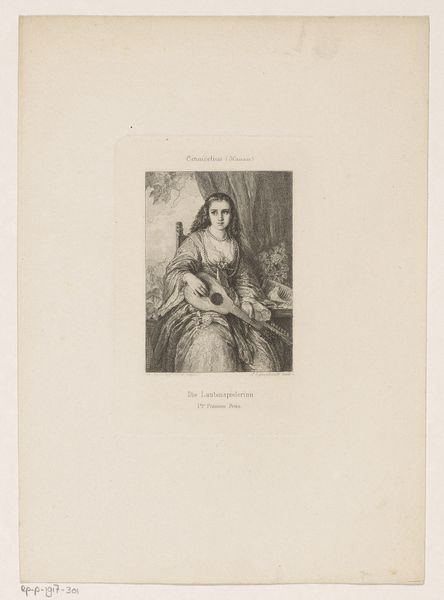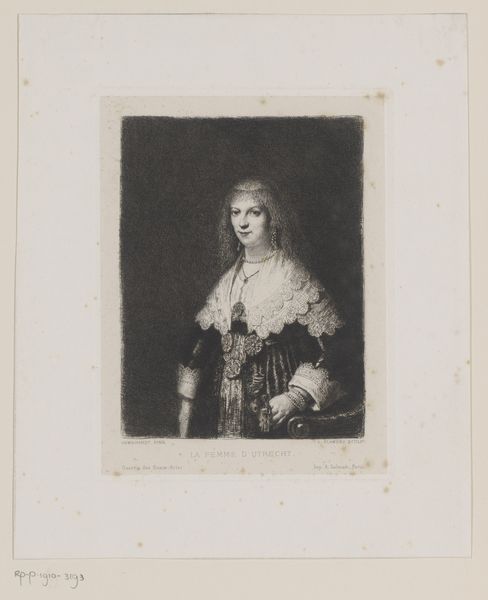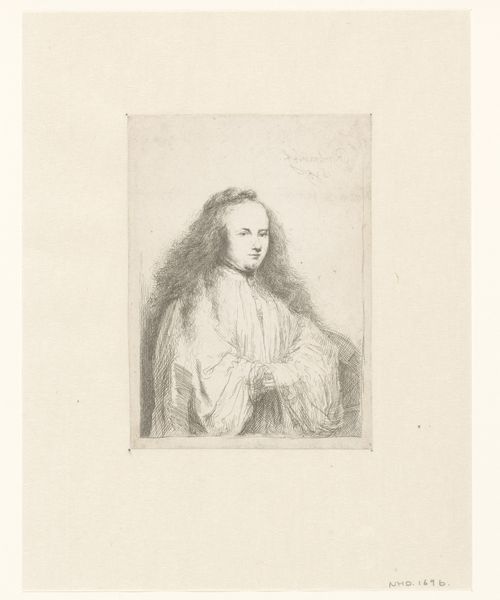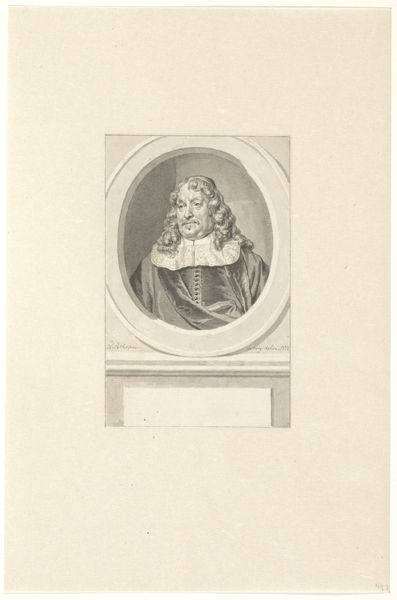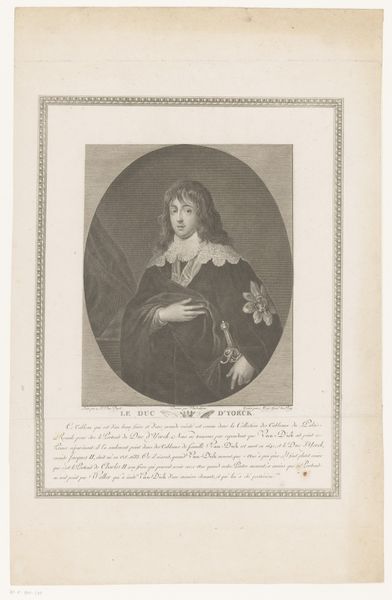
Dimensions: height 298 mm, width 218 mm
Copyright: Rijks Museum: Open Domain
Curator: Looking at "Portret van een onbekende Venetiaanse vrouw" here at the Rijksmuseum, produced between 1861 and 1889 by William Unger using an etching technique, it's striking how the artist evokes such texture in the print. Editor: My immediate thought is how somber and almost haunting the subject looks. The tonality makes her seem very withdrawn, and I'm interested in how that contrasts with her elaborate presentation. Curator: Unger was quite skilled. The etcher’s use of line is meticulous. See how the light plays across the woman's hair, creating the illusion of softness through varied densities of lines, but it still draws our eyes to the fine detail in the costume. We're able to appreciate the materials in an etching format. Editor: The presentation, yes, it's such a curious thing to examine. It is of course, impossible to ignore that the woman is anonymous. We don't know who she is or why Unger chose her to memorialize, and that anonymity actually impacts my reading of this work because her presentation becomes more of a statement than an act of individualized agency. Did the socio-political forces of that period impose constraints? Curator: Considering Unger was working in a period marked by the rise of print culture, these kinds of portraits allowed wider dissemination of images. I see an engagement with the market, addressing the social desire for accessible art. This allowed even the common citizen to access fine art. Editor: The art's distribution certainly makes this interesting and makes her unknowability stand out. Maybe the point is not *who* she is, but what she *represents*. She embodies this idea of the Venetian woman during a very particular moment, commodified through printmaking. That elevates its value, and as you mentioned makes art accessible through different classes of society. Curator: It really forces us to see the interplay between high art and popular consumption at that time. Editor: Right, and how artistic creation itself can become a social marker. Fascinating piece! Curator: Indeed, quite thought-provoking to see how process and persona are intertwined within a historical frame.
Comments
No comments
Be the first to comment and join the conversation on the ultimate creative platform.
